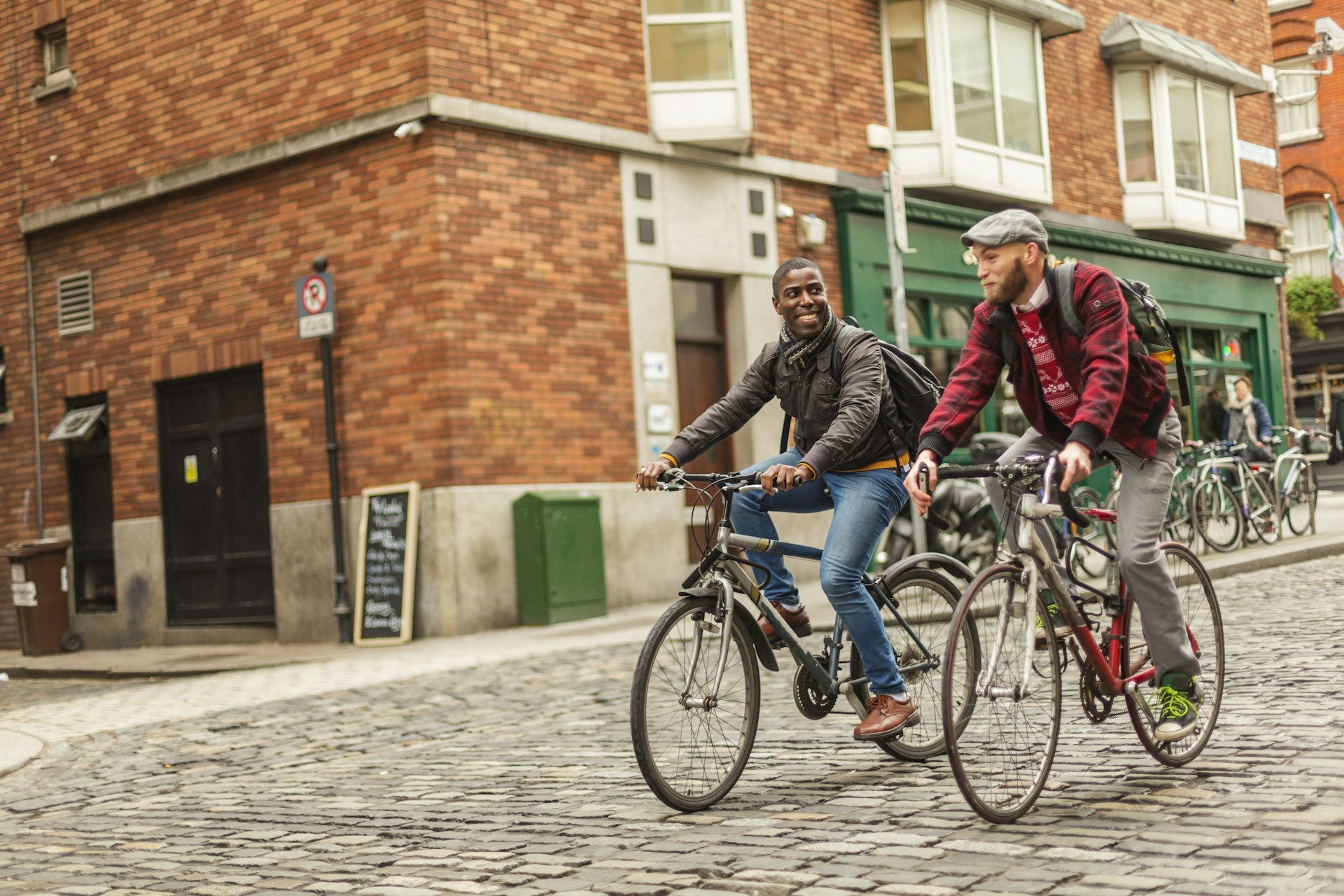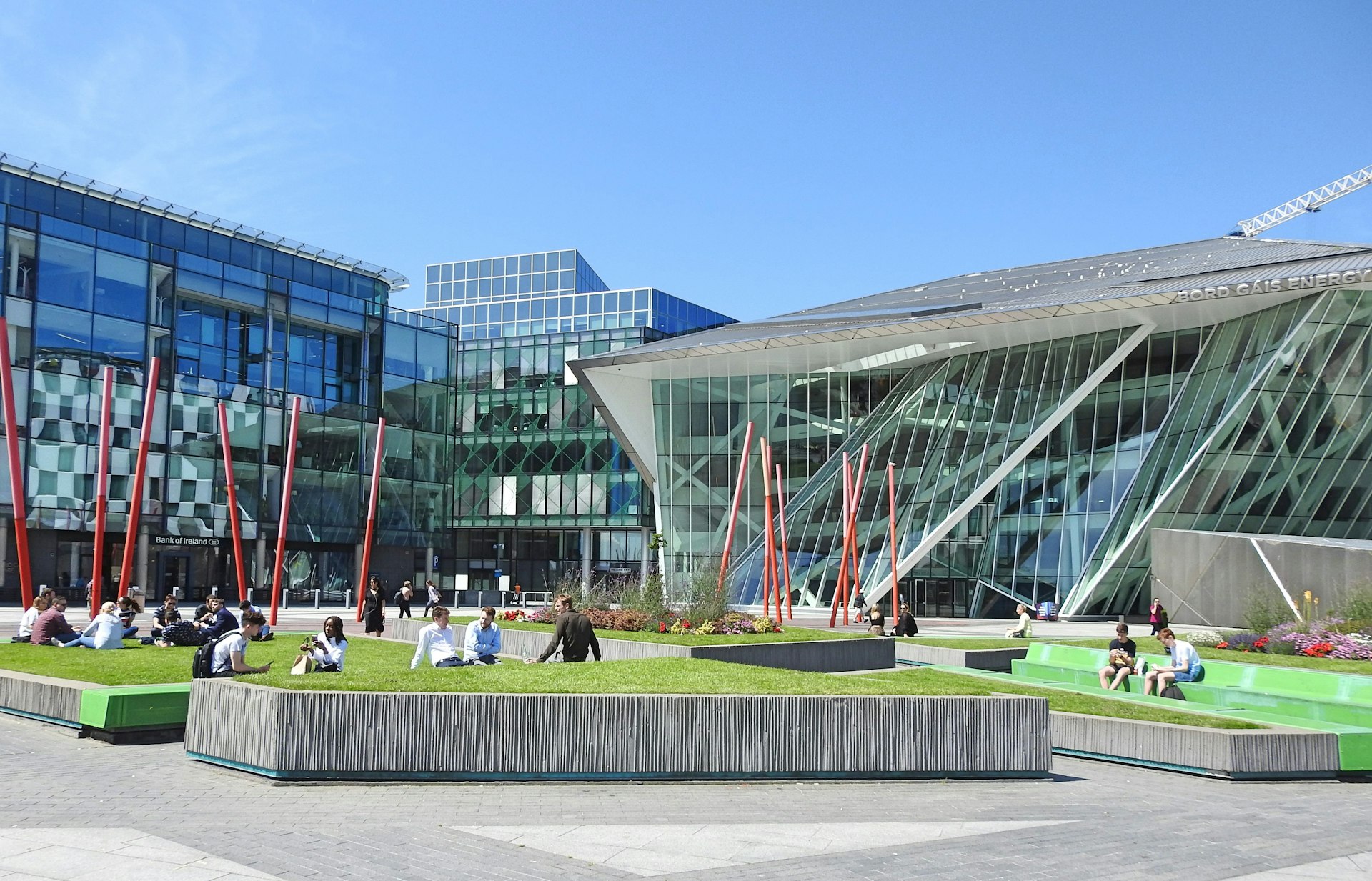Even if your budget is tight and your pockets are light, there are ways to experience everything Dublin has to offer. You may have to bypass high-end restaurants and opulent castles but you won’t miss out on a diet of international street food, live music sessions and sociable hostels.
Dublin, like any other major European capital, can be expensive, but the city has a lot of free and low-cost activities on offer. One thing that you’re guaranteed to find at no cost is hospitality, great craic, and maybe a little rain! Here are some of our top tips for visiting Dublin on a budget.
1. Spread your search to find bargain routes to Dublin
Ireland’s main international airport is in Dublin, so the city benefits from global connectivity. With Dublin being the home and hub of budget carrier Ryanair, there are always cheap ways to get here by air from Europe. Aer Lingus often offers deals and flash sales on its many transatlantic routes.
Unfortunately, the island of Ireland has no direct connections by rail to mainland Europe or the UK, but train travel can be combined with a ferry across the Irish Sea. Irish Ferries offers a special “RailSail” fare on the Holyhead to Dublin route that includes onward train travel, from as little as €45 per person each way. Stena Line also operates on the Holyhead to Dublin route, while Irish Ferries connects Dublin to Cherbourg in France for both foot and car passengers. Look for deals on both carriers.
2. Consider spring or late summer instead of peak season
The shoulder season, from late August to October, can also be the best time to visit Dublin, weather-wise. September, when the schools resume after the summer break, usually offers the best value for tourists. Peak times to visit the city include St Patrick’s Day in mid-March and the lead-up to Christmas in December; come either before or after these holidays (so in February, April, November or January) to help your euros go further.
3. Get world-class views for the price of a train ticket
Sometimes the best way to see a city is to get out into nature and look back. There are plenty of great views in town (for example, from the bridges over the Liffey), but the best views are from just outside the city, accessible for the price of a ticket on a DART train service. From atop Killiney Hill or Howth Head, you can drink in the fresh air and look out toward the Irish Sea on one side, and the sprawling expanse of Dublin to the other, and have the Dublin and Wicklow Mountains as a moody backdrop.
Keen to stretch your legs or take a refreshing dip in beautiful surrounds? Hiking enthusiasts and sea swimmers are well catered for, as Dublin is in striking distance of both coast and mountains. The popular Bray to Greystones walking route in nearby County Wicklow is an easy trip from the capital – visit on a weekday for a quieter time on the trail.
4. Plan ahead to get free entry and guided tours of many Dublin museums
Many of the city’s top museums are ticketed but Dublin has plenty of museums offering free admission, including the National Museum of Ireland, which celebrates the country’s history of decorative arts, natural history and archaeology in three distinctive locations dotted around the city.
Art lovers should take a trip to the Hugh Lane Gallery, the National Gallery of Ireland or the Irish Museum of Modern Art (IMMA) in Kilmainham. For fans of photography, the National Photographic Archive and the Gallery of Photography are both located on Meeting House Square in Temple Bar.
Even better, some institutions offer free guided tours, led by expert staff – perfect for enhancing your visit. The resplendent Chester Beatty Library and its collection of books, manuscripts and tablets from across world cultures and religions, and the Hugh Lane Gallery with its many artistic masterpieces, both offer free tours on particular days of the week.
Prefer to trace the footsteps of Irish presidents instead? The official residence and office of the President of Ireland, Áras an Uachtaráin offers free tours almost every Saturday of the year on a first-come-first-served basis.
5. Order your pints with a side of live music
Music is the lifeblood of Dublin and buskers provide a constant soundtrack to the streets in most areas of the city, with the pedestrianized areas of Temple Bar and Grafton Street being particularly popular spots. If you prefer your music indoors, one of the best (and cheapest!) ways to experience proper live “trad” (traditional) Irish music is in the corners of Dublin’s pubs.
There are dozens of public houses where you can order a pint and get lost in the music – unless, of course, the whole room erupts into a spontaneous sing-song. Notable music spots include The Celt on the Northside of the Liffey, O’Donoghue’s on the Southside, The Old Storehouse in Temple Bar and the popular Sunday sessions at the Dame Tavern, Walshs, Devitt’s and Doheny & Nesbitt.
6. For good value eats in Dublin, go global
Dublin is a multicultural city with global influences and sometimes international flavors offer the tastiest value. A hearty, generous bowl of piping hot ramen noodles will cost around €14 and fill you up for an entire afternoon; find some of the best at Ramen Co in Stoneybatter and The Ramen Bar on South William St.
Popular Turkish spot Reyna offers filling dishes around the €11 mark, or you can grab a delicious Palestinian falafel wrap for €6.50 at Umi. Trendy Mexican joint 777 sells every dish for €7.77 on Sundays, while nearby Masa slings fresh tacos, quesadillas and other Mexican small plates seven days a week, and nothing on the food menu goes beyond €8. Vegetarian spots Cornucopia and Govinda’s specialize in healthy, hearty plates at good prices.
Some of Dublin’s best burgers are also affordable; you can find them for less than a tenner at Bunsen, Dash Burger and WOWBURGER. Iconic chip shop takeaways (“chippers” in local parlance) such as Leo Burdock’s and Beshoff Bros offer substantial portions of battered fish and chips for less than €15. Pizza lovers can grab a larger-than-life slice at DiFontaine’s for around €5.50, whilst nearby sit-in spot Sano Pizza serves one of the best value 12” pizzas you’ll find anywhere in Dublin.
7. Pick when and where you stay to save
Dublin is known for being an expensive capital to stay in, but the city has a huge number of hotels – many of which have popped up in the last decade. Aim to visit earlier in the week (Sunday–Tuesday) for good deals, special offers and the best value nightly rates.
When it comes to picking an area to be based, hotels in Dublin 1 and Dublin 2 (the most central districts) carry higher costs, but being based in the heart of the city will allow you to save on public transport as you can walk everywhere. Consider private rooms in hostels too – these can be better value than hotel rooms if you’re looking to explore Dublin on a budget and don’t need the extra frills. Some notable options include Generator, Kinlay House and Jacob’s Inn.
If you want really warm, local service and a hot breakfast, consider a family-run guesthouse or B&B. Note, however, that many are on the arterial roads leading out of the city – something to consider when it comes to travel time and transport costs.

8. See the whole city by public transport
Taxis and car rentals can be expensive in Dublin, and you’ll have to factor in overnight parking rates and longer journey times in the often congested traffic. To save, walk or use public transport instead. The city center is flat, compact and walkable, and you can hop on two wheels courtesy of the Dublin Bikes bike-share scheme to zip around.
If you’d prefer to take the weight off, get carried away with the Luas tram, the Dublin Bus network and DART suburban trains – you can easily reach the suburbs or head further afield for easy day trips. You won’t need to hire a car unless you want to explore the rest of Ireland.
Navigate like a local with these tips for getting around Dublin
9. Enjoy public art for free
A great way to create a fun-filled itinerary in Dublin is to visit as many of the statues dotted across the city as you can. The most famous local icons are Molly Malone, Oscar Wilde, Phil Lynott and James Joyce, but you’ll also find tributes to Charles Stewart Parnell, Luke Kelly, Wolfe Tone, Brendan Behan, Daniel O’Connell, Patrick Kavanagh, Jim Larkin and more.
Must-see pieces of public art include the Children of Lír sculpture in the Garden of Remembrance on Parnell Square and the Famine Memorial installation on Customs House Quay. More statues are found in and around Trinity College, Ireland’s oldest university, so make some time to stroll around the beautiful historic campus in the heart of the city.

10. Get cheap tickets for the theatre
You can take in a show at the Abbey Theatre (which also offers backstage and behind-the-scenes tours) for as little as €15 for matinee performances. Keenly-priced tickets can also be found at the Bord Gáis Energy Theatre, while other more intimate theatres such as the Gate Theatre and Gaiety Theatre offer tickets with prices beginning at around €20.
11. Pack a picnic and go people-watching
Dublin’s green spaces are ideal for staking out a bench for a spot of people-watching or finding a picture-perfect picnic spot. Among the most beautiful parks in Dublin are the city’s Georgian squares: Merrion Square, Mountjoy Square, St Stephen’s Green and, of course, Phoenix Park.
The George’s Street Arcade near St Stephen’s Green is a handy place to grab some delicious bites – pre-made sandwiches at Simon’s Place, mezze bits from Umi, and nuts, snacks and sweet bites from Nutty Delights. For more gourmet finds, try the deli at the Dunnes Stores supermarket on the edge of the arcade.
Save our list of free things to do in Dublin.
Dublin by average price:
- Hostel room: €25–40 per dorm bed per night
- Basic room for two: €100–130 per night
- Self-catering apartment (including Airbnb): €250 per night
- Public transport ticket: €2.30
- Coffee: €3
- Takeaway sandwich: €7
- Dinner for two: €50–60
- Beer/pint at the bar: €5.50
